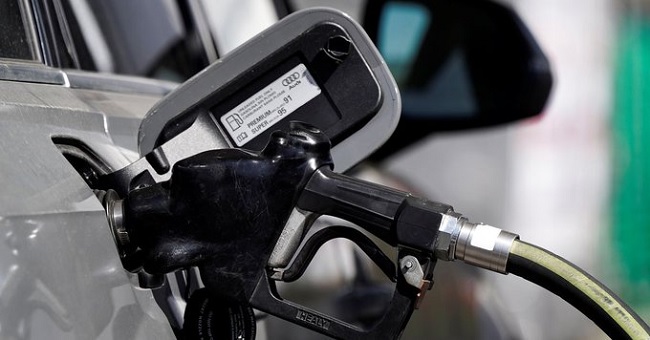The national average for a gallon of gas has fallen below $4 for the first time since early March, a key psychological threshold for cash-strapped Americans even as inflation remains elevated. (REUTERS)
The U.S. average dropped 2 cents overnight to $3.99, AAA reported Thursday, a 20 per cent pullback from its June peak above $5. The run-up in gas prices earlier this year is tied to the Russian invasion of Ukraine and the ensuing turmoil in energy markets.
Relentlessly high inflation is the nation’s most vexing economic problem, prompting months of recession talk even as job growth has soared — U.S. employers added 528,000 jobs in July — and consumer spending has remained resilient.
But lower pump prices mean there’s less drag on the broader economy, as evidenced by federal data released Wednesday that shows inflation eased in July. Though overall prices remain elevated, climbing 8.5 per cent year over year, they’ve moved away from the pandemic peak of 9.1 per cent recorded in June, when the U.S. fuel average topped out at $5.02. The gasoline index fell 7.7 per cent in July.
Gas prices may surge again ahead of the midterm elections
Crude prices that had been hovering near $80 a barrel in January had pushed past $120 by March, on fears the Russian conflict would curtail supply and disrupt energy markets. Pump prices soon followed, swelling nearly 20 per cent roughly a week after the Feb. 24 invasion.
But oil prices have been cooling since early June, with West Texas Intermediate crude, the U.S. benchmark, hovering around $91 per barrel on Thursday. Fuel costs are now in line with what consumers and businesses were paying before the war.
Experts say the sell-off is largely driven by worries of a possible recession in several large global economies, which would crimp fuel demand.
Economists have been warning of a possible recession in the United States for months. Jeff Buchbinder, the chief equity strategist for LPL Financial, said in a Monday note that he thinks the odds of a U.S. recession in the next year are “perhaps a coin flip or better,” despite the Labor Department’s blockbuster jobs reading on Friday. England’s central bank warned last week that Britain would enter a protracted recession by the last quarter of 2022.
Five charts explaining why inflation is so high
The National Bureau of Economic Research has not declared the United States to be in a recession, even though economic activity has already declined for two consecutive quarters. Still, fuel demand is already down: As measured as a four-week moving average, it stood at 8.6 million barrels a day as of July 29, according to the U.S. Energy Information Administration. That’s 8.7 per cent lower than a year ago.
Meanwhile, there is still a possibility that prices could turn around. OPEC, the group of oil-producing nations that includes Saudi Arabia, has only minimally boosted production despite entreaties from President Biden and other world leaders to remedy supply shortfalls.
Analysts also note that the main culprit behind higher gas prices — Russia’s war in Ukraine — is still in full swing, as well as the Western sanctions designed to punish Moscow. J.P. Morgan has warned that in a worst-case scenario — in which Russia retaliates by shutting down its supply altogether — the price of oil could go as high as $380 per barrel, more than quadruple what it is today.
ALSO READ FROM NIGERIAN TRIBUNE
- ‘39.6 percent of unmarried university students use sexual performance-enhancing drugs’
- Tips on building a happy and healthy relationship
- Safety precautions to observe at the airport
- Safety tips to observe when boarding a ride from a ride-hailing app
- Secure your social media accounts from hackers with these tips
- Things to look out for before starting a business
- Striking a balance between your 9-5 job and your side hustle
- Little or no work experience? Here’s what you can do
- Top 10 Business Ideas In Nigeria You Can Start With 100,000 Naira
WATCH TOP VIDEOS FROM NIGERIAN TRIBUNE TV
- Let’s Talk About SELF-AWARENESS
- Is Your Confidence Mistaken for Pride? Let’s talk about it
- Is Etiquette About Perfection…Or Just Not Being Rude?
- Top Psychologist Reveal 3 Signs You’re Struggling With Imposter Syndrome
- Do You Pick Up Work-Related Calls at Midnight or Never? Let’s Talk About Boundaries






